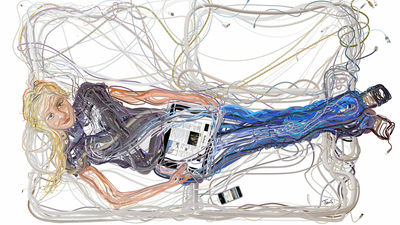Creative activities like dancing and painting may help keep your brain young

It has been shown that creative activities such as music and painting are not only enjoyable but also
Creative experiences and brain clocks | Nature Communications
https://www.nature.com/articles/s41467-025-64173-9

Creativity is good for the brain and might even slow down its aging – new study
https://theconversation.com/creativity-is-good-for-the-brain-and-might-even-slow-down-its-aging-new-study-267797
Lead author Carlos Coronel, a postdoctoral researcher at the Latin American Brain Health Institute at Adolfo Ibáñez University in Chile, and his colleagues explained their motivation for conducting the study: 'Many people believe that art is too mystical and intangible to be studied scientifically or to produce biological changes. We wanted to challenge this belief. Can creative experiences, which are joyful and deeply human, be measured in the brain? Could creative experiences help slow brain aging in the same way that exercise has positive effects on the body?'
The research team recruited approximately 1,400 participants from various countries. The participants included skilled creative practitioners, such as tango dancers, musicians, visual artists, and gamers, as well as unskilled participants from the same countries who were matched for age, education, and gender. None of the unskilled participants had any experience in the respective fields.

The research team used
The researchers used the collected data to create a biological model of the brain (a 'digital brain') and investigate the biological mechanisms behind creativity. The digital brain simulates brain function using detailed biological and physical laws, which could help understand creativity and brain health.
The study found a pattern linking creativity with brain youth across all creative fields examined: Tango dancers, for example, had brain ages that were more than seven years younger than their chronological age, musicians and visual artists five to six years younger, and gamers about four years younger.
To see whether short-term creative learning could have a similar effect, the research team also conducted a small-scale experiment in which unskilled subjects were trained for 30 hours on the strategy video game StarCraft II . The results showed that just 30 hours of creative training rejuvenated the subjects' brains, reducing their brain age by two to three years.

In this study, the more participants engaged in creative activities such as dancing, painting, music, and games, the younger their brains became. The researchers concluded that creativity protects areas of the brain that are vulnerable to aging and makes brain communication more efficient.
'Art and science are often seen as opposing forces, but in fact they are allies,' Coronel and his colleagues wrote. 'Creativity shapes not only culture but also biology. Our research reframes creativity as not just a cultural or psychological phenomenon, but as a biological pathway that leads to brain health and resilience.'
Related Posts:
in Free Member, Science, Posted by log1h_ik







